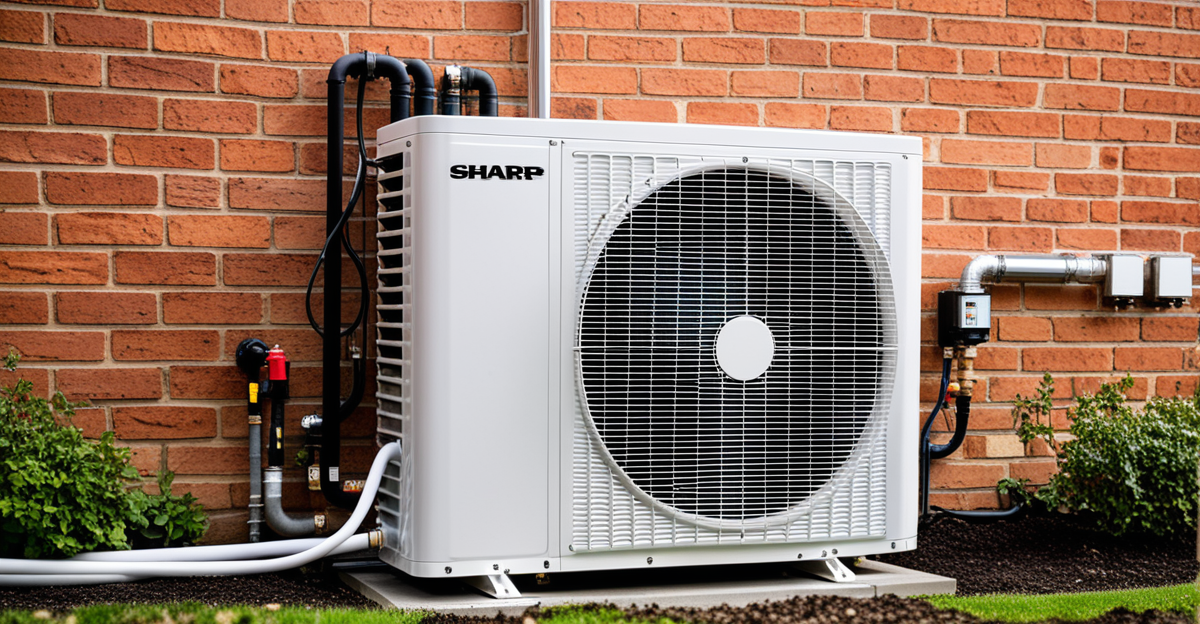Air source heat pump installation: your guide to efficiency and savings

Installing an air source heat pump can transform your home heating by boosting efficiency and cutting energy bills. Success depends on matching the system to your property’s unique features. Understanding installation steps, costs, and available grants helps you make smart choices that balance upfront investment with long-term savings and environmental benefits. This guide clarifies what to expect throughout the process and how to optimize your setup for maximum impact.
Essential Steps and Requirements for Air Source Heat Pump Installation
Choosing the right installation path for an air source heat pump means considering site conditions, building regulations, and precise technical calculations. The recommended process for any ASHP begins with a professional onsite assessment that examines your property’s insulation, heating demands, and available space for both outdoor and indoor units. You can view more details on this page: ASHP.
Additional reading : What Are the Best Practices for Incorporating Adaptive Reuse Architecture in Home Extensions?
Certified installers conduct a heat loss calculation—this is a key step, as it determines the correct system capacity needed to keep your rooms comfortable without unnecessary energy waste. Properties with high-quality wall, loft, and window insulation see the greatest efficiency improvements, as heat pumps operate best in homes with minimal draughts and good heat retention.
Outdoor unit placement must adhere to specific clearance and spacing regulations. You’ll need at least a meter of free space around the pump for adequate airflow. The outdoor area should be flat, sturdy, and ideally shielded from strong winds. Proximity to neighboring properties and noise level limitations may further determine suitable locations.
Also read : How to Choose the Most Durable Surfaces for High-Use Family Kitchen Counters?
Proper sizing and installation means adapting the heat pump to your home. If radiators are undersized or insulation is lacking, expect recommendations for upgrades before the new system is fitted, ensuring lasting performance and energy savings. Only MCS-accredited installers, familiar with current UK rules, can guarantee grants eligibility and top system efficiency.
Costs, Grants, and Choosing a Certified Installer
Cost Overview: Typical Prices, Influencing Factors, and Potential Additional Expenses
The installation cost breakdown for an air source heat pump depends on home size, system type, and integration complexity. The average installation price in the UK ranges between £7,000 and £11,000, but costs can climb to £15,000 where major upgrades or new infrastructure are needed. Key cost factors affecting installation include property insulation quality, radiator compatibility, and electrical requirements. Further expenses sometimes arise from pipework upgrades, fitting larger radiators, or additional system components.
Available Grants and Government Support Schemes
Significant grant eligibility and funding options are available. Through schemes like the Boiler Upgrade Scheme (England and Wales) and Home Energy Scotland grants, homeowners can access support up to £7,500 for qualifying systems, reducing installation expenditure considerably. Funding rules demand installation by MCS accredited installers, so always verify eligibility before contractor selection.
Importance of MCS Certification and Comparing Installers
Choosing certified heat pump technicians is vital for compliance, warranty, and safety. Select from local MCS accredited installers to ensure eligibility for grants and adherence to installation standards. Always compare quotes from professional installers near me, review contractor selection tips, and check references. Make sure your installer is a qualified installer with relevant certifications, knowledge of grant options, and a track record of reliable installations.
Professional vs DIY Installation and Installation Timeline
Risks and limitations of DIY installation compared to professional fitting
DIY air source heat pump installation may seem attractive for reducing costs, but the risks are substantial. Precision: improper fitting, missing compliance with building regulations, and electrical hazards all increase when working without the support of professional installers near me. Most grants and warranties require a certified heat pump technician; DIY installation commonly results in warranty loss, exclusion from schemes, or costly future repairs due to common installation mistakes to avoid.
Choosing professional installers near me provides reassurance that the air source heat pump system is installed safely and efficiently. Professionals know how to avoid common installation mistakes to avoid, ensure correct system sizing, and provide valid installation warranty and guarantees.
Training and certification requirements for installers
Professional installers near me must hold MCS or TrustMark accreditation. This ensures an installer’s training and confirms their eligibility for government funding. Accredited professionals often have access to ongoing installation training courses and are regularly reviewed to protect homeowners. Confirming a valid installation warranty and guarantees with your installer strengthens long-term peace of mind.
Typical installation timeline and process
Professional installation typically takes two to five days, depending on home complexity. Expect temporary loss of heating or hot water. Disruption may occur—floorboards might be lifted and new pipework run. Installation warranty and guarantees offered by professional installers near me cover efficiency, safety, and long-term support post-install.
Maintenance, Operational Tips, and Long-term Performance
Essential maintenance requirements and tips for maximising system lifespan
For peak heat pump efficiency, follow seasonal maintenance schedules diligently. Clear debris and leaves from around the outdoor unit each month to maintain airflow. Replace or clean indoor filters regularly. Annual servicing by a certified heat pump technician is essential; it involves refrigerant level checks, inspection of electrical connections, and system pressure monitoring. These post-installation maintenance tips extend your heat pump system’s lifespan, which averages around 20–25 years with proper care. Adhering to maintenance guidelines supports optimal operational cost calculators’ predictions and keeps running cost estimation accurate.
Operational costs and potential annual savings over gas or oil heating
Using operational cost calculators, running cost estimation for heat pumps shows possible annual savings of up to £1,200 when switching from oil or electric heating. The energy savings potential is significant, especially as heat pumps operate efficiently, using less energy than gas or oil boilers. These savings, paired with available grants, help offset the initial investment.
Environmental impact, energy consumption, and guidance on post-installation support and troubleshooting
Heat pump efficiency optimization techniques—like upgrading insulation and using smart controls—enhance energy savings potential and further reduce environmental impact. Post-installation, many providers offer support and troubleshooting for energy consumption tracking and efficiency advice. Over time, this sustainable approach aligns with the environmental benefits of installation and reinforces your eco-friendly heating goals.
